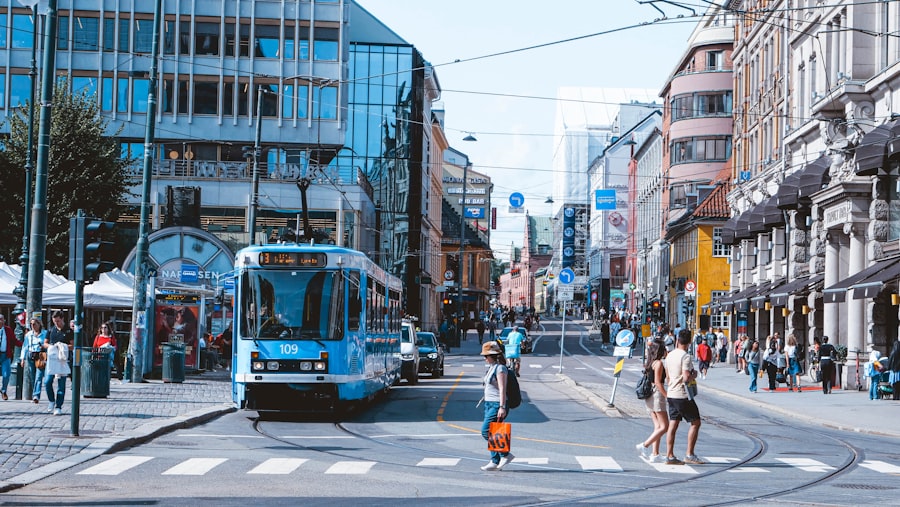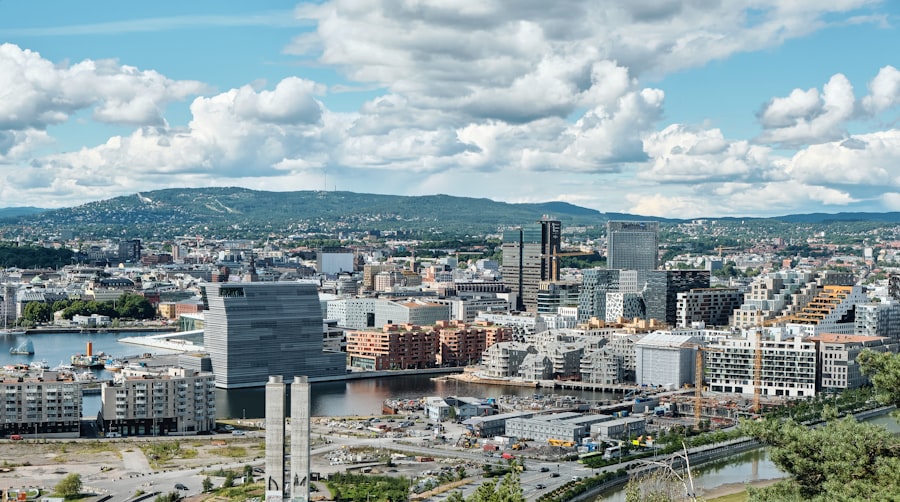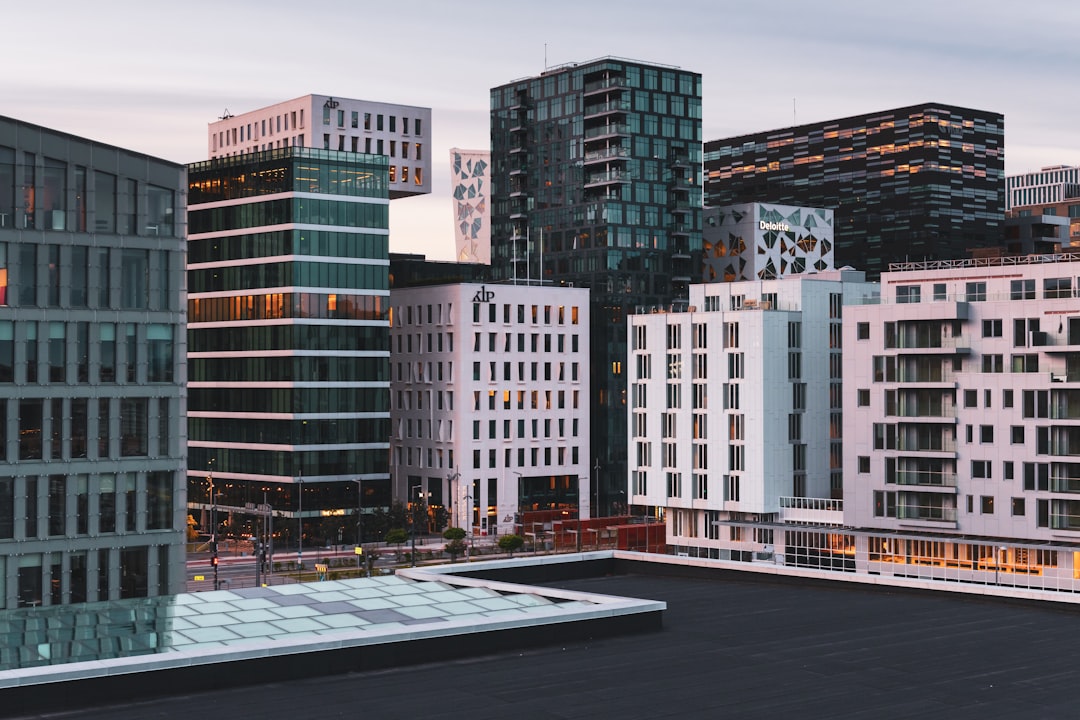Norway is often heralded as one of the most beautiful countries in the world, with its stunning fjords, majestic mountains, and vibrant cities. However, this natural beauty comes at a price, and understanding the cost of living in Norway is essential for anyone considering a move to this Scandinavian nation. The cost of living can vary significantly depending on various factors, including location, lifestyle choices, and personal circumstances.
As of 2023, Norway remains one of the most expensive countries in Europe, but it also offers a high standard of living, comprehensive welfare benefits, and a robust economy. The cost of living encompasses a wide range of expenses, from housing and food to transportation and healthcare. For expatriates and locals alike, navigating these costs can be daunting.
However, with careful planning and budgeting, it is possible to enjoy all that Norway has to offer without breaking the bank. This article will delve into the various components of living expenses in Norway, providing insights and tips for managing costs effectively. Take the first step. Book a consultation with the Norway Relocation Group for your move to Norway.
Summary
- Norway has a high cost of living, with expenses for housing, food, transportation, healthcare, education, and entertainment being significantly higher than in many other countries.
- Housing expenses in Norway are particularly high, with rental and property prices in urban areas being much steeper than in rural areas.
- Food and grocery costs in Norway are also expensive, with fresh produce and imported goods being particularly pricey.
- Transportation costs in Norway are high, with fuel, public transport, and vehicle expenses all contributing to the overall cost of living.
- Healthcare expenses in Norway are covered by the national healthcare system, but residents still have to pay for certain services and medications, making it important to budget for healthcare costs.
Housing Expenses in Norway
Housing is typically one of the most significant expenses for residents in Norway. The cost of renting or purchasing property can vary dramatically between urban and rural areas. In cities like Oslo, Bergen, and Stavanger, housing prices are notably higher due to demand and limited availability.
A one-bedroom apartment in Oslo can easily set you back around 12,000 NOK per month, while similar accommodations in smaller towns may cost significantly less. In addition to rent or mortgage payments, prospective residents should also consider other housing-related expenses such as utilities, maintenance fees, and property taxes. Utilities can add an additional 1,500 to 2,500 NOK monthly, depending on usage and the size of the property.
It is essential to factor these costs into your budget when evaluating housing options in Norway. Furthermore, the rental market can be competitive, so it is advisable to start your search early and be prepared to provide documentation such as proof of income and references.
Food and Grocery Costs in Norway

Food prices in Norway are notoriously high compared to many other countries. The cost of groceries can be a shock for newcomers, with basic items such as bread, milk, and cheese often priced higher than what one might expect. A loaf of bread can cost around 30 NOK, while a litre of milk may be priced at approximately 20 NOK.
Dining out is also expensive; a meal at a mid-range restaurant can easily exceed 300 NOK per person. Despite these high costs, there are ways to manage food expenses effectively. Shopping at discount supermarkets like Rema 1000 or Kiwi can help reduce grocery bills significantly.
Additionally, buying seasonal produce and local products can offer savings while supporting Norwegian farmers. Meal planning and cooking at home are also excellent strategies for keeping food costs down while enjoying the culinary delights that Norway has to offer.
Transportation Costs in Norway
Transportation costs in Norway can vary based on location and mode of travel. In urban areas like Oslo, public transport is efficient and widely used. A monthly public transport pass can cost around 800 NOK, providing access to buses, trams, and the metro system.
For those who prefer driving, petrol prices are relatively high compared to other countries, often exceeding 20 NOK per litre. Additionally, car ownership comes with expenses such as insurance, maintenance, and parking fees. For those living in rural areas or smaller towns where public transport options may be limited, owning a car may be more practical despite the associated costs.
However, it is worth noting that Norway has invested heavily in infrastructure for electric vehicles (EVs), making them an attractive option for environmentally conscious drivers. EV owners benefit from lower taxes and toll exemptions in many regions, which can help offset some transportation costs.
Healthcare Expenses in Norway
Norway boasts a comprehensive public healthcare system funded by taxes, ensuring that residents have access to necessary medical services without incurring exorbitant costs. While healthcare is largely free at the point of use for citizens and residents, there are some out-of-pocket expenses for certain services such as dental care and prescription medications. For example, a visit to a general practitioner may incur a nominal fee of around 200 NOK.
It is important for expatriates to understand how the healthcare system works upon moving to Norway. Registering with the National Registry is essential for accessing public healthcare services. Additionally, private health insurance is available for those who prefer quicker access to specialists or additional services not covered by the public system.
Overall, while healthcare expenses exist, they are generally manageable within the context of Norway’s high standard of living.
Education and Childcare Costs in Norway

Education in Norway is primarily funded by the government, making it free for children from primary school through university level. This commitment to education ensures that all children have access to quality schooling without incurring significant costs. However, parents should be aware that there may be additional expenses related to school supplies, extracurricular activities, and school trips.
Childcare costs can vary depending on the type of care chosen. Public kindergartens are subsidised by the government; however, parents may still need to pay fees that can range from 3,000 to 4,000 NOK per month for full-time care. Private childcare options tend to be more expensive but may offer more flexibility or specialised programmes.
Overall, while education is largely free in Norway, families should budget for associated costs to ensure their children receive a well-rounded experience.
Entertainment and Leisure Expenses in Norway
Norwegians value their leisure time and often engage in various activities that contribute to their quality of life. However, entertainment expenses can add up quickly in this country known for its high prices. A cinema ticket can cost around 120 NOK, while a night out at a bar may set you back approximately 150 NOK for a drink.
Outdoor activities such as hiking or skiing are popular but may require investment in equipment or lift passes. Despite these costs, there are numerous ways to enjoy leisure activities without overspending. Many cities offer free events throughout the year, including concerts and festivals that celebrate local culture.
Additionally, exploring Norway’s breathtaking natural landscapes provides countless opportunities for outdoor adventures at little to no cost. Embracing the outdoors not only promotes physical well-being but also allows residents to experience the beauty of their surroundings without straining their budgets.
Taxes and Social Security Contributions in Norway
Norway’s tax system is progressive; higher earners pay a larger percentage of their income in taxes compared to lower earners. While this may seem burdensome at first glance, it is essential to recognise that these taxes fund the extensive welfare system that provides healthcare, education, and social services for all residents. The average tax rate can range from 22% to over 50%, depending on income levels.
Social security contributions are also deducted from salaries to support various benefits such as unemployment insurance and pensions. While these contributions may seem high, they ensure that residents have access to essential services throughout their lives. Understanding the tax system is crucial for anyone moving to Norway; it allows individuals to appreciate the benefits that come with their contributions while planning their finances accordingly.
Comparison of Cost of Living in Urban and Rural Areas in Norway
The cost of living in Norway varies significantly between urban centres and rural areas. In cities like Oslo and Bergen, housing prices are considerably higher due to demand and limited space. Conversely, rural areas often offer more affordable housing options but may lack some amenities found in urban settings.
For instance, while you might pay upwards of 12,000 NOK for a one-bedroom apartment in Oslo, similar accommodations could be found for half that price in smaller towns. Additionally, grocery prices may differ slightly between urban and rural areas; however, the disparity is not as pronounced as with housing costs. Transportation options also vary; urban residents benefit from extensive public transport networks while those in rural areas may rely more heavily on personal vehicles due to limited public transport availability.
Ultimately, individuals must weigh their priorities when choosing between urban or rural living based on their lifestyle preferences and financial considerations.
Tips for Managing and Reducing the Cost of Living in Norway
Managing the cost of living in Norway requires careful planning and budgeting strategies. One effective approach is to create a detailed monthly budget that outlines all income sources and expenses. This will help identify areas where savings can be made or where spending may need to be adjusted.
Additionally, taking advantage of discounts offered by supermarkets or local businesses can lead to significant savings over time. Another useful tip is to embrace local culture by participating in community events or exploring free outdoor activities available throughout the country. Many municipalities host free concerts or festivals during summer months that provide entertainment without any cost involved.
Furthermore, utilising public transport instead of owning a car can lead to substantial savings on fuel and maintenance costs while promoting environmentally friendly practices.
Overall Outlook on the Cost of Living in Norway in 2025
As we look towards 2025, it is clear that the cost of living in Norway will continue to present challenges for both residents and newcomers alike. While housing prices are expected to remain high in urban areas due to ongoing demand, there may be opportunities for more affordable options emerging as new developments arise outside city centres. Food prices may also see fluctuations based on global market trends; however, local initiatives promoting sustainable agriculture could help mitigate some costs.
Ultimately, understanding the various components of living expenses in Norway will empower individuals to make informed decisions about their finances while enjoying all that this remarkable country has to offer. For those looking to immerse themselves fully into Norwegian culture—especially expatriates—consider enrolling in Norwegian courses at the NLS Norwegian Language School in Oslo. These courses not only provide language skills but also foster connections within the community that can enhance your overall experience living in this beautiful nation.
By investing time into learning the language and culture alongside managing your finances wisely, you will be well-equipped to thrive in Norway’s unique environment as we move into 2025 and beyond.
Learn more about the Norwegian classes at the NLS Norwegian Language School in Oslo

